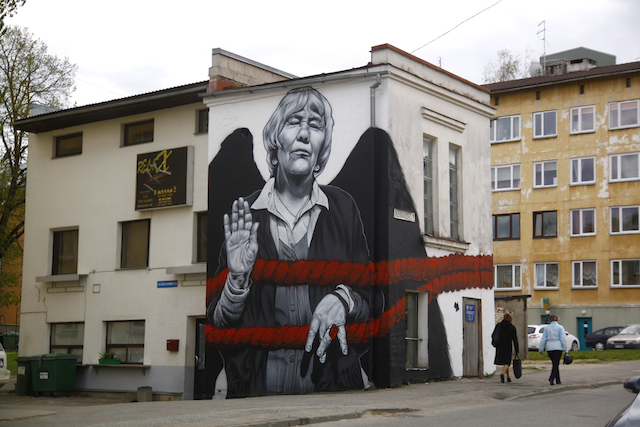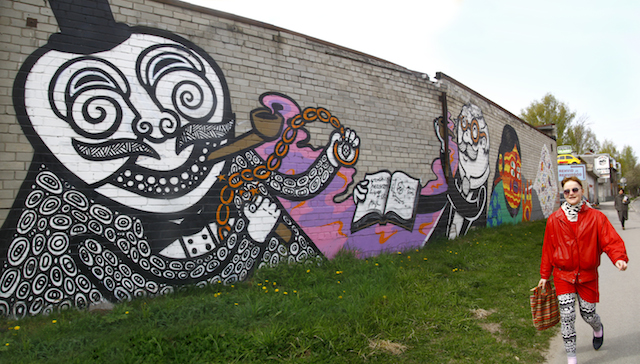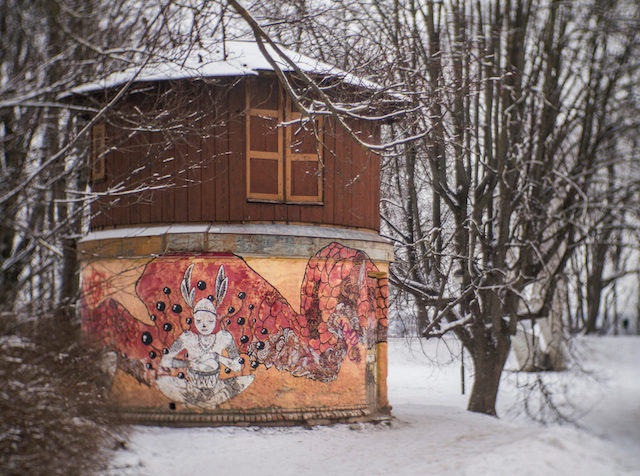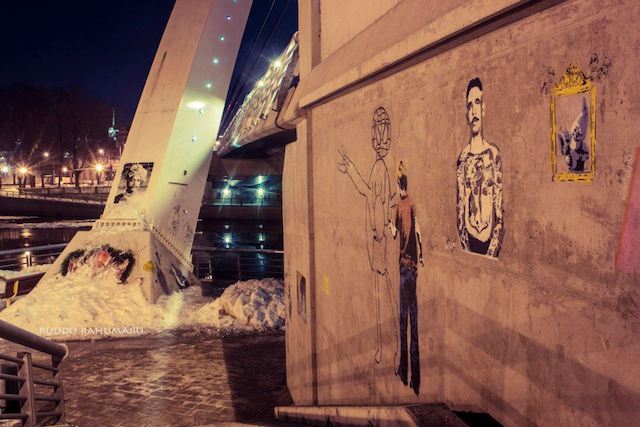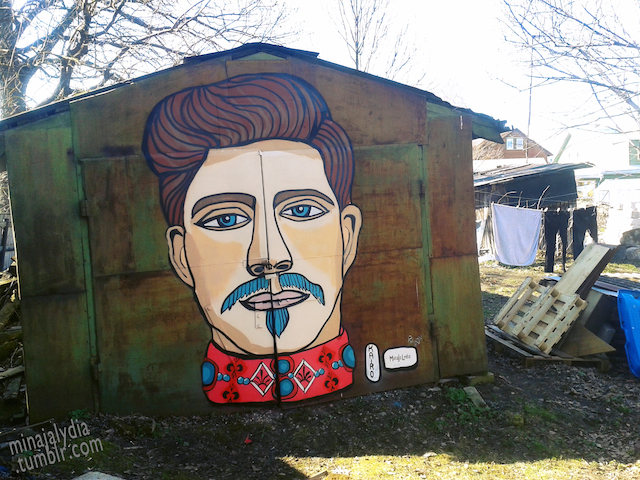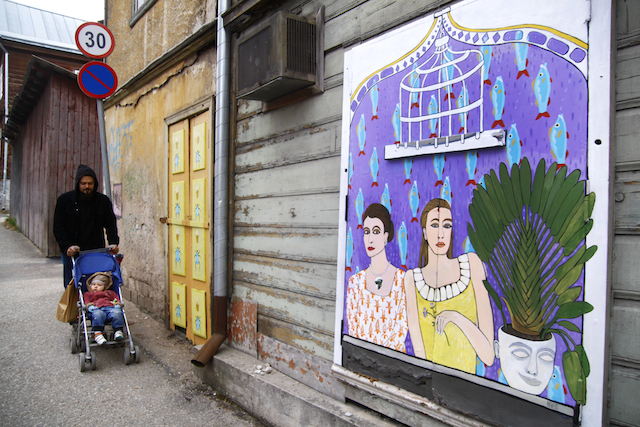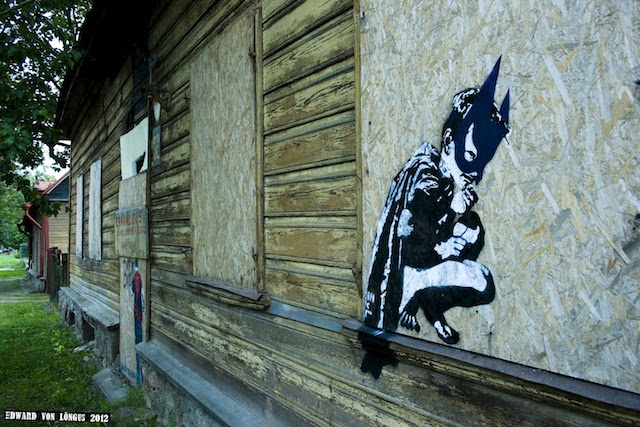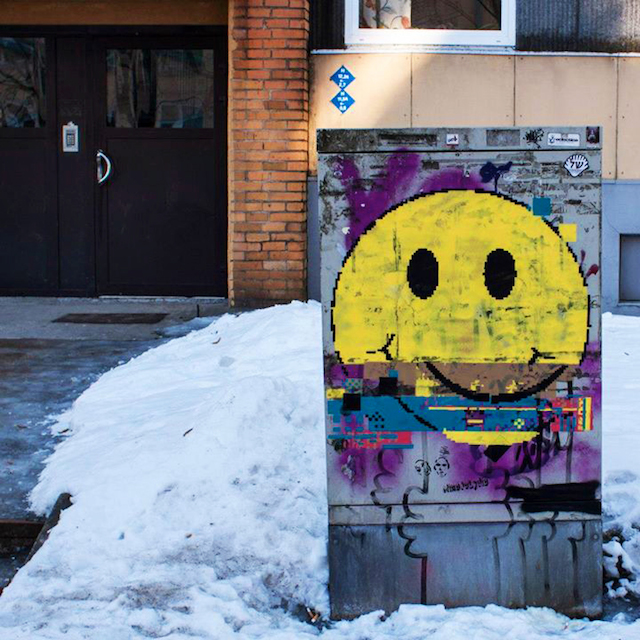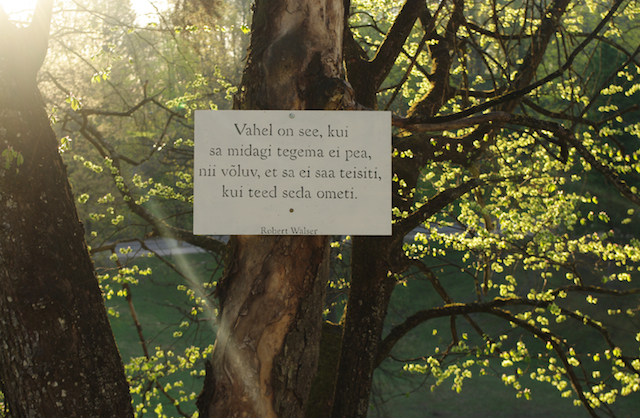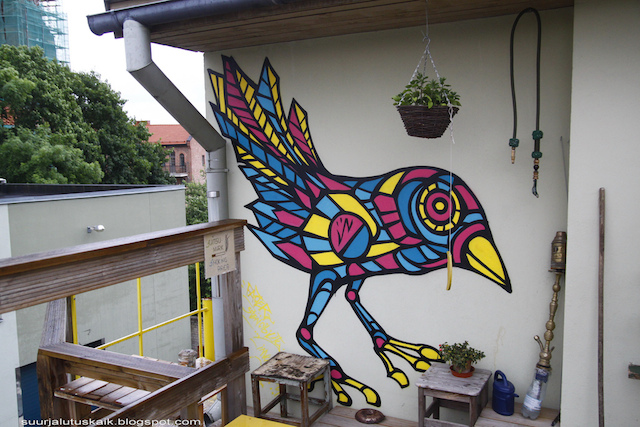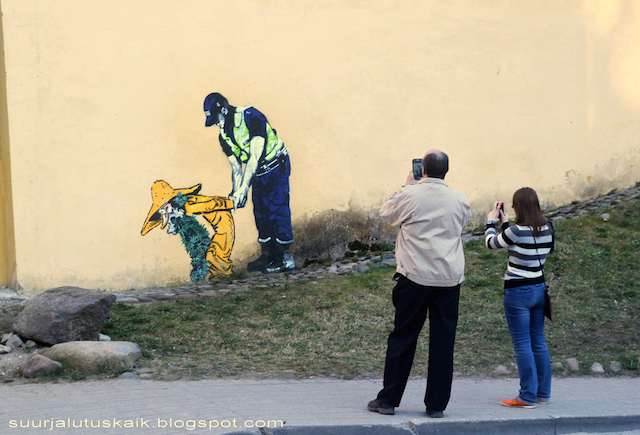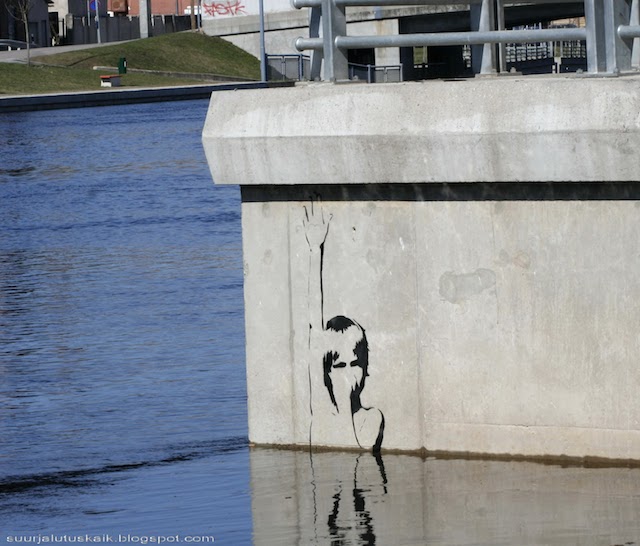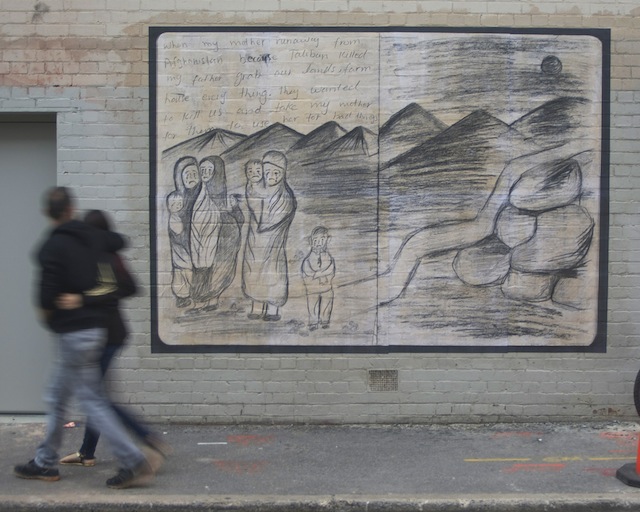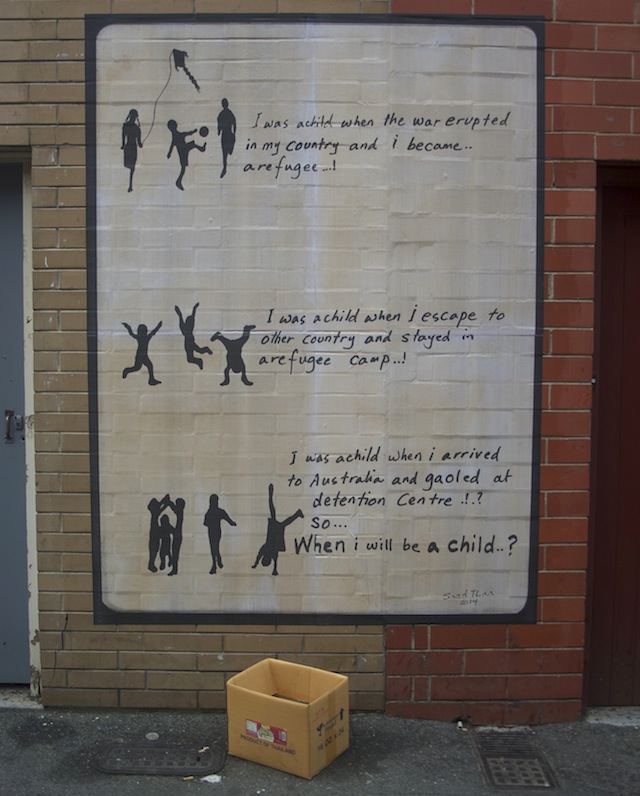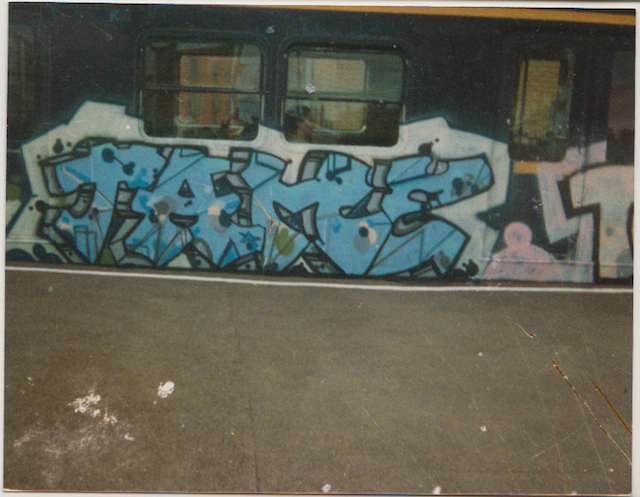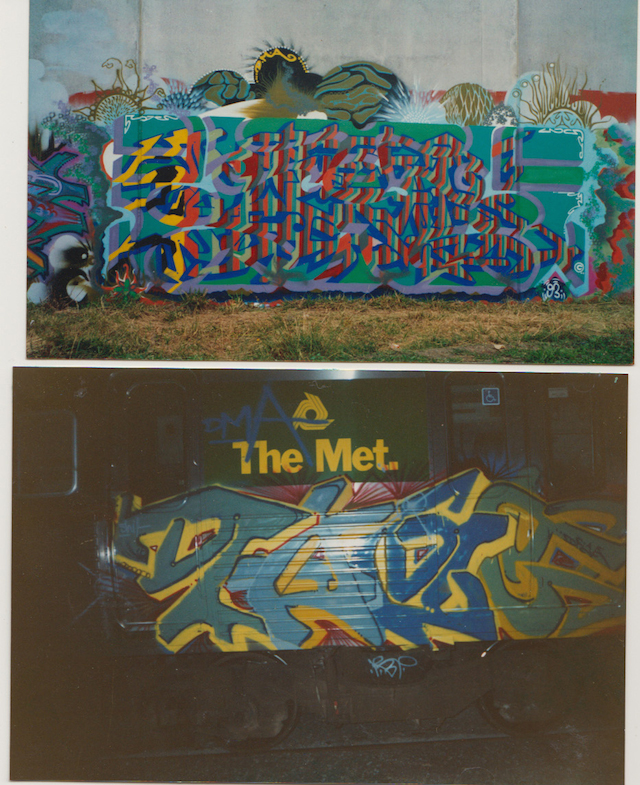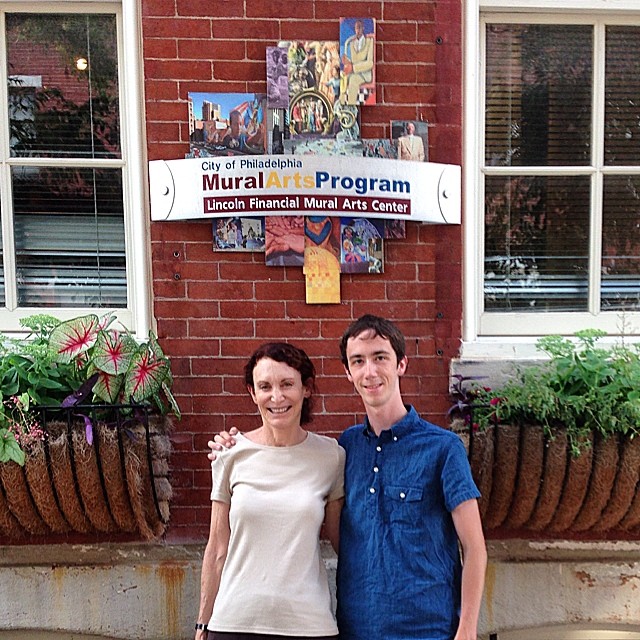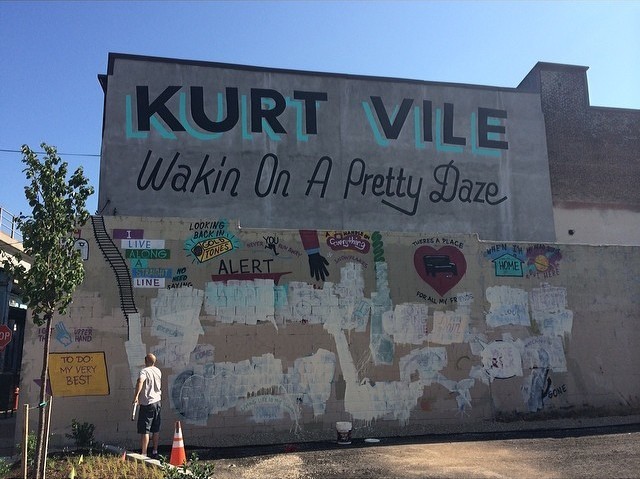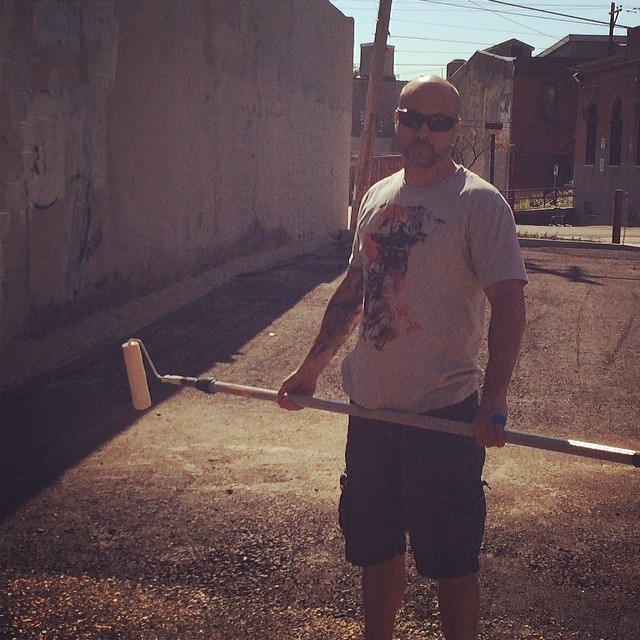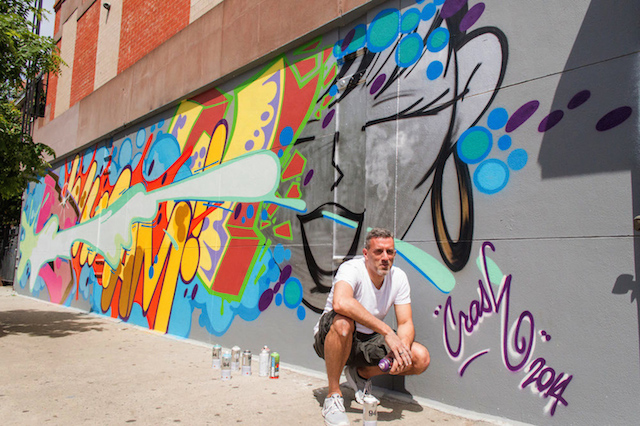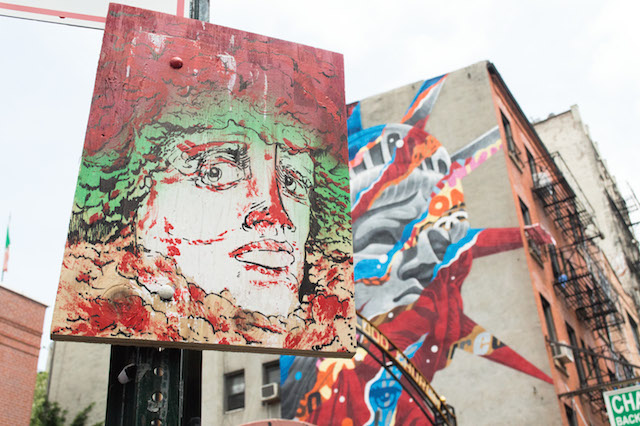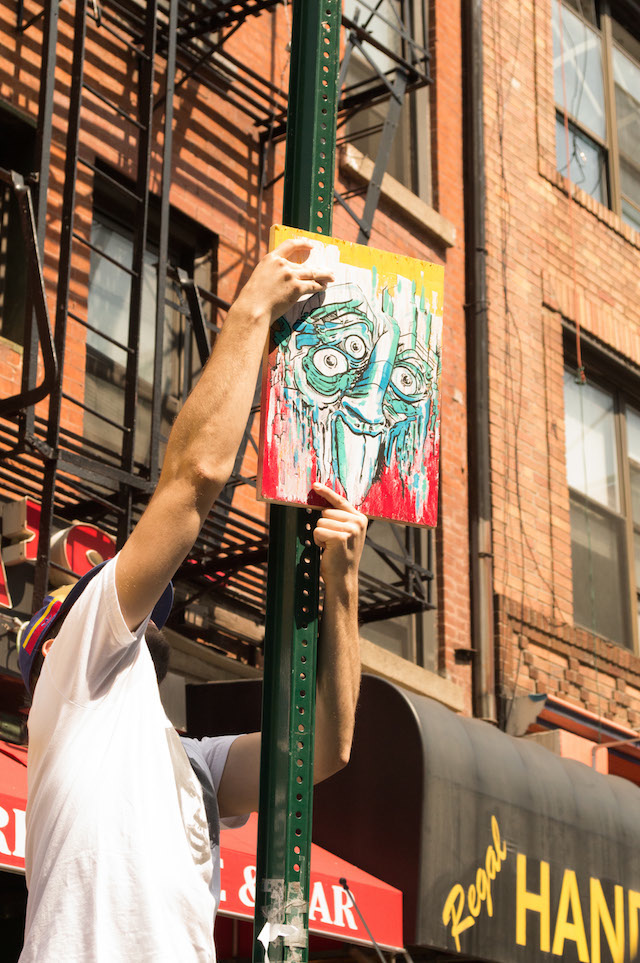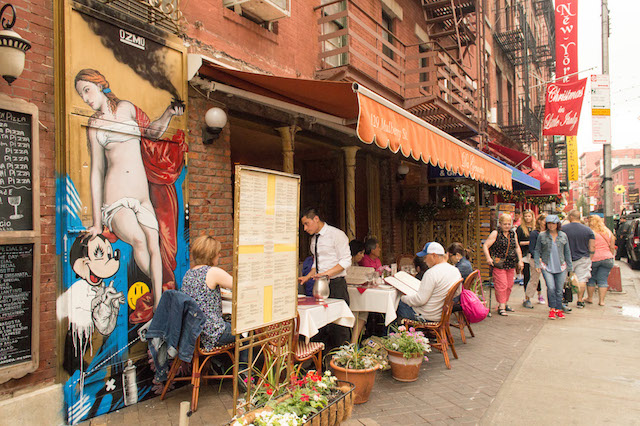
Some recent works by Shepard Fairey and Os Gêmeos have caught my eye, for essentially the same reason. These sculptures go beyond the typical artwork or even installation artwork in that they do not simply create a situation or depict something, but rather act as objects from another reality, transported into our own. This isn’t something completely new to art, but it’s certainly atypical.
Two works by Fairey in the show The Insistent Image stand out to me. Both are bronze sculptures, and each is based off of a separate print by Fairey from 2007. The prints are interesting enough, but these sculptures bring the ideas in each print to life. While I’ve heard other people describe these sculptures as a bit corny, I think they do their job. Both pieces look like the sort of ridiculous thing that an eccentric fascist dictator would really put on their mantlepiece or dining room table. By taking these ideas from 2D to 3D, Fairey has transformed them from essentially political cartoons into something almost real. Despite their absurdity, these works are much more powerful and disconcerting as bronze sculptures than 2D illustrations.

Also of note is a participatory piece by Os Gêmeos that is part of their show A ópera da lua at Galpão Fortes Vilaça in São Paulo. The text in the piece, though not easily visible in the photo below, reads “Retrato família” (“family portrait”). Essentially, the artwork is an invitation to take a photograph beside an Os Gêmeos character and with a backdrop straight out of Os Gêmeos’ world, but also easily recognizable as a sort of vernacular photography setup. In many ways, the piece reminds me of Alyse Emdur’s Prison Landscapes series and the photography it is inspired by. While Os Gêmeos’ work indoors and outdoors is often in some way about bridging the gaps between their dreamworld and our reality, this piece takes that idea to an extreme. By taking a photo in this artwork, viewers become a part of Os Gêmeos’ world in a way that simply observing or taking your picture with most of their other artworks, however impressive the installation, sculpture or painting may be, does not allow.

These works do not attempt to depict something. They attempt to realize something, and something unfamiliar at that. Even Dalí’s surreal paintings and sculptures are mere references to another reality, not that reality realized in our own. These works by Fairey and Os Gêmeos at least attempt to realize the unfamiliar, the surreal. When these works succeed, it’s as if each work has been teleported into our world from an alternate universe, rather than made in an artist’s studio, or perhaps as if being around them (at least in the case of Os Gêmeos) temporarily transports us into that alternative universe. These works are artists’ surreal visions made real, or as close to that as we are likely to get. I think that’s great.
Photos by Susan Sermoneta, @gikacrew and courtesy of OBEY Giant and OBEY Clothing





